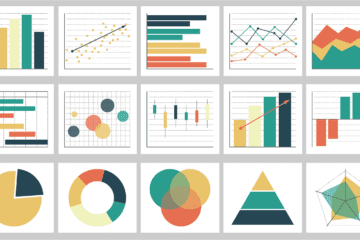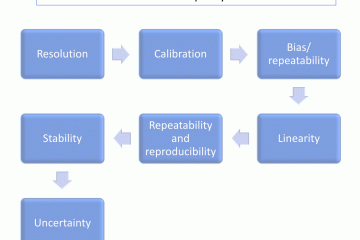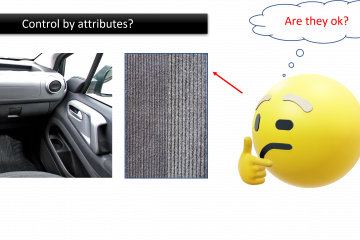Useful or just paper?
Personally I do not create or write documents only to pass the certification audit or to please the auditor but to help the company can take advantage of the adequate use of the quality tools. Even the documents required by the standard and which during the certification and the surveillance audits you have to show can be very useful if you really see the reason behind. In my opinion, the whole quality management system should work for you and help you detect problems, avoid failures and risks, support to reach stable and robust processes and of course, guarantee conformity of your products and services and reach the customer satisfaction 😉
In summary, the quality management system is not to be a bunch of paper or electronic documents with the only purpose to “satisfy or fulfill” a standard. If for your company it is only that, probably you will have defects, rejects, miscommunications and unhappy customers.
To assess how useful your quality management system is, go to production and ask the operators if they know the quality policy, go to other employees and ask if they have read and understood the quality manual. Perform iInternal audits to prove whether the system complies but also to see if the processes, documents, forms and records are easy to use, adequate, used and followed. Users of the documents of the QMS should not work according to the procedure because of hierarchy or in a compulsory manner. Users of the system should be convinced that working with the QMS makes their job effective and efficient, avoids accidents and help reach the conformity of the product, reduces waste and makes the whole company more profitable.
Are you and your company there yet? As you may know, the ISO9001 and IATF16949 also require evidence of the awareness of the employees about quality, their role in fulfilling customer and legal requirements and about the consequences of non-conformities. Besides, the process owners and the top management should find a way to motivate all the employees towards quality and innovation. How does your company do that?
Let’s recap. If you took one working instruction for an easy and one for a complex operation in your company, could you execute the job even if it is the first time? If your working instruction is like the assembly instructions of IKEA furniture or Lego toys, congratulations!!!! I love to compare to such short manuals because EVERYBODY can put an IKEA couch together and EVERY child can assemble a Lego Starwars-ship or whatever set they get. So, the quality system should have documents simple, short and easy to use, be concise and whenever possible contain more graphics than text. The quality manual, being the main base document of the quality management system, should be so attractive that everybody is attracted to read.
The quality manual
The quality manual is not longer required by the ISO9001 but by the IATF16949 and the minimum content (as called in the standard) is:
- the scope of the quality management system, including details of and justification for any exclusions;
- documented processes established for the quality management system, or reference to them;
- the organization’s processes and their sequence and interactions (inputs and outputs), including
- type and extent of control of any outsourced processes;
- a document (i.e., matrix) indicating where within the organization’s quality management system their customer-specific requirements are addressed.
And what I normally do is to include some other important documents in the manual to make it our bible or operational manual. What do I add? For instance, as complement of the scope I also describe the company context, the main interested parties and documents which comply to the following requirements:
- The organization shall determine the processes needed for the quality management system and their application throughout the organization (for this I add an image of the process map of the QMS of the company -see post Quality Management System), and shall:
- determine the inputs required and the outputs expected from these processes;
- determine the sequence and interaction of these processes (the sequence can be shown in the process map and the interactions in the multiple sipoc’s that you can create for the business processes -see the post SIPOC & Turtle);
- determine and apply the criteria and methods (including monitoring, measurements and related performance indicators) needed to ensure the effective operation and control of these processes (in the header of the sipoc you can add the name of the process owner and the main kpi’s);
- determine the resources needed for these processes and ensure their availability;
- assign the responsibilities and authorities for these processes;
- address the risks and opportunities as determined in accordance with the requirements of 6.1 (I add to the Q manual an image of the management risk technique to be used for all the business processes);
- evaluate these processes and implement any changes needed to ensure that these processes achieve
- their intended results;
- improve the processes and the quality management system
- Quality policy
- Roles and responsibility
- Risk management (and how the main risks will be added to the contingency/emergency/preparedness plans)
- Improvement process
- Customer specific requirements (how and where they will be addressed)
- Communication process – in a communication matrix.
- Claim and warranty management
- Problem solving
How to make the quality manual more appealing?
First of all I must say that the quality manual and in general, the quality management system should reflect your company culture. There is no perfect recipe for documents, content, etc. What Japanese people may consider adequate may differ to what Germans or Mexicans think.
In my experience, I have tried to make the quality manual a training and communication tool. I try to think of it as an “employee manual” instead of the traditional quality manual.
In general, when you think of operation manuals, working instructions or technical books you start yawning before opening the book. If general perception of your employees is that the quality documents are boring and only paperwork, the motivation to read the manual and to use the system is low. So, nobody but the auditor will read it. Keep in mind, that the shorter the better, using images or graphs instead of complicated helps and by adding, when possible, a touch of humor, aesthetics and practical approach, you can make a HUGE difference. If you succeed making the manual appealing, you can also make it somehow necessary and use it as well as a support tool to reach the quality awareness, motivation towards quality and as a communication tool.
You can even shape the manual as you want, not only as a text document but it can be a video, a training session or a combination of text and media, post it in your internet page or intranet (or perhaps a sharepoint) with visual documents, videos and even music.
You can be the new artist and reach out the attention and interest of the whole company.
Since an employee manual is far more personal and unique to every company, you can also involve more employees when designing and giving shape to the content.
Let’s think a little bit of written communication, pro’s and cons to gather more ideas on the perfect fit for your quality manual.
- Why isn’t there a user manual in the box of a new cell phone? Can it be that nobody reads it? Or perhaps is only used as trouble-shooting?
- Why can everyone assemble IKEA furniture? Why don’t we follow the example and also make procedures and work instructions that everybody can use?
- How can you make for your company documents like even small children could love like the instruction of lego toys or comics.
- What happens with long documents with tons of text? I guess most of us are kind of lazy when it comes to reading and get bored pretty fast with many and long pages of plain text.
- What is the best way to provide information, guidance and/or needed knowledge?
- What if we made the workers and users of the documents help us give shape and write useful content to what we create? Would that make the difference?
- What if we could use ideas from other cultures, industries and activities? Have you seen how Chinese and Japanese companies use visual boards, aids, error-proof tools and systems? In some cases even a simple idea with cheap materials but nice looks do the job. Do we need high-tech tools and huge investments to reach good quality?
Well, I hope I could make you think out of the box and provided some useful tips.
As reference you will find below an extract in pdf of one of my quality manuals.
I wish you a lot of success.



0 Comments